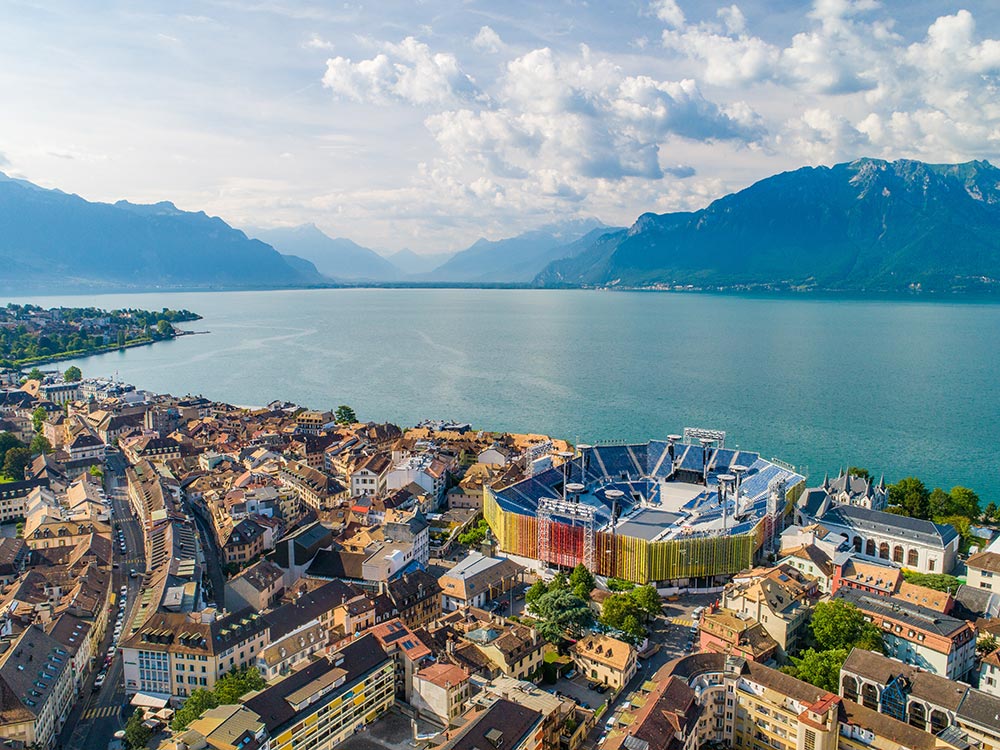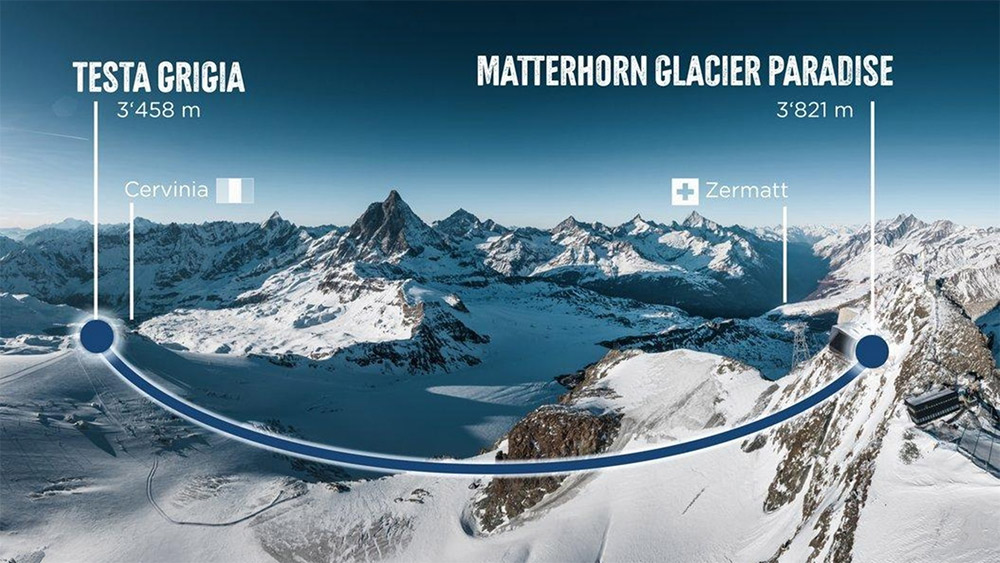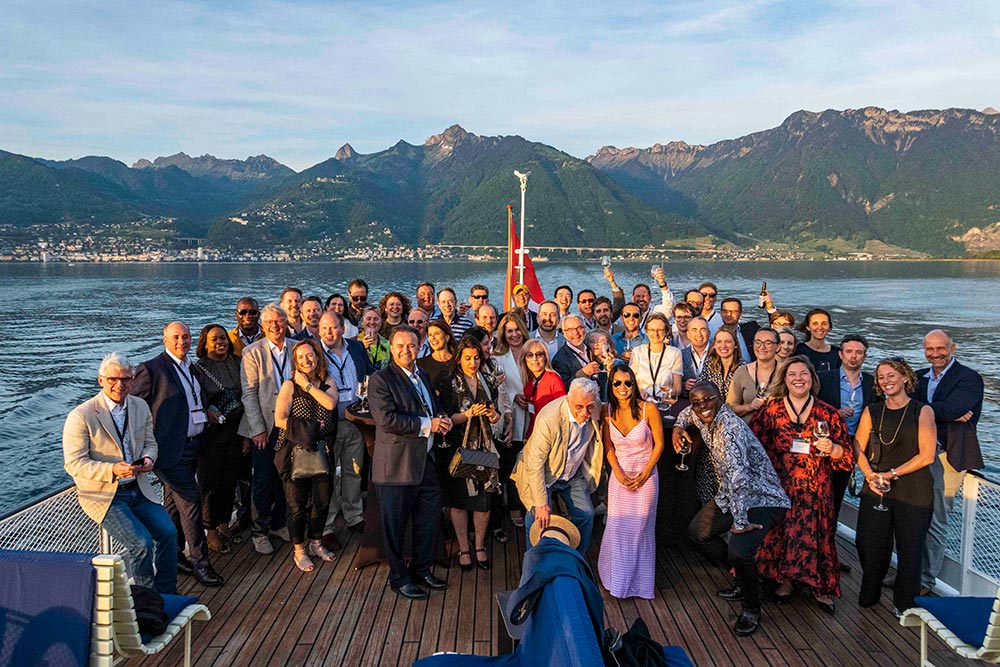Conference report: ICP Working Weekend 2022

Vevey, Switzerland. Credit: adou/Adobe Stock
China Irwin
Geneva
Thomas Denehy
Sydney
After a long wait due to Covid-related restrictions, ICP members gathered on 13–15 May 2022 for the much-anticipated Working Weekend in the idyllic setting of the Grand Hotel du Lac in Vevey, Switzerland.
The Weekend proved to be worth the wait, combining informative sessions led by the ICP subcommittees with memorable social events. In addition to the interesting and interactive sessions, delegates and their guests enjoyed poolside cocktails and a gourmet dinner, which opened the weekend on the Friday evening. They also enjoyed a memorable steamboat cruise on Saturday evening, viewing the neighbouring villages in France and Switzerland, picturesque vineyards, the imposing Chateau de Chillon and a perfect spring sunset over the lake.
Here’s a brief recap of the Working Weekend sessions. Further insights into these topics, included in this issue of CLInt are: an article by Russell Thirgood on remote hearings; insights from Leendert van den Berg on liability for innovations; and the challenges of the Itu Headquarters Building case in Brazil by Ana Cândida de Mello Carvalho and Victoria Carolina Lima de Oliveira. Articles from other presenters at the Working Weekend will be included in the next edition of CLInt.
Session one
Lessons learnt from the impact of Covid-19 and the war in Ukraine presented by the Dispute Resolution Subcommittee
Sharon Vogel and Thomas Frad
(Dispute Resolution Subcommittee Co-Chairs)
Claus Lenz and Russell Thirgood
Following opening remarks from the Working Weekend Co-Chairs (Jean-Pierre van Eijck in the conference room and Joe Moore quarantining from his hotel room), the Dispute Resolution Subcommittee led the first session.
Dispute Resolution Subcommittee Co-Chairs Sharon Vogel and Thomas Frad chaired an interesting discussion in which Claus Lenz and Russell Thirgood gave an overview of the types of Covid-related claims made in practice and the types of contractual provisions parties rely on (including force majeure, change in law, emergency provisions, etc).
Sharon shared insights from recent Canadian construction cases addressing Covid-19 as well as the American Society of Civil Engineers (ASCE) new Standard 71-21 on Identifying, Quantifying, and Proving Loss of Productivity, published in May 2021. Claus shared his own experience of a dispute board being asked to consider Covid-based claims, noting the divide between common law and civil law perspectives on the issue of whether a contractor can choose between available remedies. Finally, Russell examined the rise of remote hearings as a result of the pandemic and considered some of the advantages and challenges of technology-assisted hearings. His views are set out in detail in the article ‘Remote hearings: storm clouds and silver linings’, included in this issue of CLInt.
Following the informative presentation, delegates were divided into break-out groups led by Sharon Vogel, Thomas Frad, Claus Lenz, Russell Thirgood, Janet Walker, and Sam Moss for an opportunity to exchange views and personal experiences with claims related to Covid-19 or the war in Ukraine. By way of example, one group considered the most common type of claims and whether they were capable of resolution using existing mechanisms within contracts. In this regard, we discussed that:
In Brazil, most claims fell within force majeure provisions, but in public law contracts there was a need to maintain the economic balance of contracts which added some complexity to the issue.
In Singapore, the legislature created Covid (Temporary Measures) Act in March 2020, an interventionist legislation that in effect cut across what parties may have agreed in the contract, such as banning calls on bank guarantees or prohibiting parties imposing liquidated damages for Covid-related delays.
Generally, there was a willingness between parties to cooperate and resolve issues, notwithstanding that most Covid-19 issues were associated with time and not cost events.
Session two
Supply chain disruption issues presented by the Project Establishment Subcommittee
Roberta Downey and Joe Guarino (Project Establishment Subcommittee Co-Chairs)
Jarleth Henegan, Eric Franco, Carla Mills and Michael O’Connor
The second session was led by the Project Establishment Subcommittee. It focused on issues of supply chain disruption, including in particular supply chain disruptions resulting from the Covid-19 pandemic, such as increased freight costs, unavailability of containers, price increases and shortages. The panellists were Roberta Downey and Joe Guarino (the Project Establishment Subcommittee Co-Chairs), Jarleth Henegan, Eric Franco, Carla Mills and Michael O’Connor. They shared their experiences from the perspective of different jurisdictions and provided practical advice as to how to draft clauses that compensate for the impacts of delay and disruption but ensure the door is not opened to abuse by contractors seeking to use the pandemic as a ‘get out of jail free’ card.
In particular, Eric considered the issue from the Latin American perspective, noting the differences between pre- and post-Covid contracts, with post-Covid contracts providing more options for addressing similar situations. Michael spoke about the UK’s approach, noting the proliferation of specific definitions of pandemics in post-Covid contracts. Carla offered the Australian perspective, explaining the evolution of employer–contractor relationships in light of Covid-19 and the increasingly common requirement for contractors to account for Covid risks. Jarleth spoke about the situation in Ireland, where contracts are now being drafted to exclude the consequences of Covid-19, as well as the war in Ukraine.
Keynote presentation: an inside look at the Matterhorn Glacier Ride cable car project
Following the morning sessions, delegates enjoyed an inside look at an impressive construction project in Switzerland – the Matterhorn Glacier Ride cable car project (see Figure 1). The presentation was given by Markus Sigrist, General Manager of Leitner Schweiz AG and Project Manager for the Matterhorn Glacier Ride I and II project.
As explained by Markus, this cross-border project involved alpine construction at altitudes of almost 4,000 metres; it presented unique logistical challenges of working in extreme conditions and working around the ski season to transport materials. The first part of this impressive project was completed in 2018 and the second part is expected to be completed in 2023, allowing passengers to travel from the Cervinia ski resort in Italy to Zermatt, Switzerland.

Figure 1: the Highest Alpine crossing by ropeway on Klein Matterhorn1
Session three
The legal and practical risks of innovation in construction projects examined by the Project Execution Subcommittee
Doug Oles and Leendert van den Berg (Project Execution Subcommittee Co-Chairs)
Sarah Biser, Ana Cândida de Mello Carvalho, Andreas J Roquette
As discussed during this session, employers often encourage or require contractors to implement innovative designs, methods and/or materials on a construction project. Yet if those innovations prove impractical, or at least substantially more expensive and/or time-consuming than expected, it is not always clear which party bears the resulting liability.
The panellists for this session were Doug Oles and Leendert van den Berg (the Project Execution Subcommittee Co-Chairs), Sarah Biser, Ana Cândida de Mello Carvalho and Andreas J Roquette. They examined the risks of innovative building technologies and the ways various contracting parties can seek to limit their liability when using them, speaking from both a civil law and a common law perspective.
Sarah examined the available data pointing to the construction industry’s resistance to innovation, while noting that the eventual use of augmented reality (AR) in the industry is inevitable. To facilitate the discussion, Sarah identified five technologies which are having increasing impact on projects:
• Augmented reality in construction, including –
– Project planning: by generating 3D models directly onto a 2D plan, combined with Building Information Modelling (BIM), construction companies can produce detailed, interactive models of projects from the outset.
– Automated measurements: AR equipment can measure height, width and depth of space. Construction companies incorporate this data into existing models which provides a total view of how the project will look.
– Project modification: AR has the ability to make changes to building models directly at the site. For example, engineers are able to virtually remove or relocate structural components and modify a building’s layout with just a few taps on the AR device.
– On-site project information: AR combines all digital information and documentation with one’s physical view. This way, field workers can view information in layers and toggle between layers to help monitor a project against its building plan.
– Team collaboration: AR allows users to share notes and videos of errors or design issues in real time, reducing the cost and time it takes to resolve problems.
– Safety training: AR can simulate hazard scenarios and equipment to better educate workers.
• Robotics may take the form of drones, which could be used for site mapping, surveying, site planning, building inspection, structural inspection or progress monitoring. Sarah considered that a combination of reduced supply of labour, increased cost of labour, safety issues, and a desire for increased productivity is driving an increase in market share of robotics on projects.
• 3D printing to bring efficiencies to projects by increasing the speed by which materials are fabricated, reducing human error, and reducing waste in the production process.
• Cybersecurity, in the context that the construction industry was the third most common industry to experience ransomware attacks in 2021.
• Blockchain, by way of the technology streamlining how participants track, manage, record, interpret, and exchange the vast amounts of information and data that is produced on a construction project.
Andreas considered the example of innovation in the Elbphilharmonie project in Hamburg, Germany, where innovation led to enormous cost overruns and delays, raising interesting legal questions with respect to the standard for determining a defect when implementing a ‘one-of-a-kind’ design. The project had a number of innovative designs, in particular a glass curtain wall façade covering a surface area of 21,800 square metres and the longest escalator tube in Western Europe, running for 82 metres with a seamless surface devoid of any expansion joints. The discussion considered the extent to which defects can exist in designs that go beyond tried and tested technologies, and if so, is it the architect or contractor that is best placed to manage the risk.
Ana considered the example of a public project in Brazil, where the contract scope was expanded to include LEED (Leadership in Energy and Environmental Design) certification, leading to a lengthy legal battle concerning public procurement law. LEED certification is an international green building certification system which is recognised as a benchmark for industry excellence in sustainability. Ana facilitated a discussion by reference to the Paço Municipal de Itu, a municipal building near Sao Paulo, Brazil. Although the contract in respect of the building was signed in 2010, the State Court of Audits, which inspects state public contracts, declared the contract illegal. The basis of the State Court’s declaration was the lack of evidence proffered by the parties that services and materials referred to or were needed for the LEED Certification. The State Court found that the basic engineering design was not properly performed. This case study served as an example of the importance of design integration and planning, and the extent to which technologies can assist parties to public construction contracts.
Leendert considered the fate of Proderma artificial wood panelling, an innovative Spanish material that engendered many legal disputes when introduced in the rougher climate of the Netherlands.
Lastly, Doug led a lively discussion among the delegates as to the various liability regimes under different jurisdictions and how these regimes deal with the issue of ‘innovation gone wrong’.
We would like to extend our thanks to Sam Moss (Vice-Chair of Dispute Resolution Subcommittee) and his colleagues at LALIVE for their organisation of the Working Weekend, as well as to the ICP Co-Chairs Joe Moore and Jean-Pierre van Eijck for their leadership for the first major in-person ICP event since the start of the pandemic.
Note
1 Leitner, www.leitner.com/en/company/news/detail/the-highest-alpine-crossing-by-ropeway-on-klein-matterhorn, accessed 1 July 2022.
